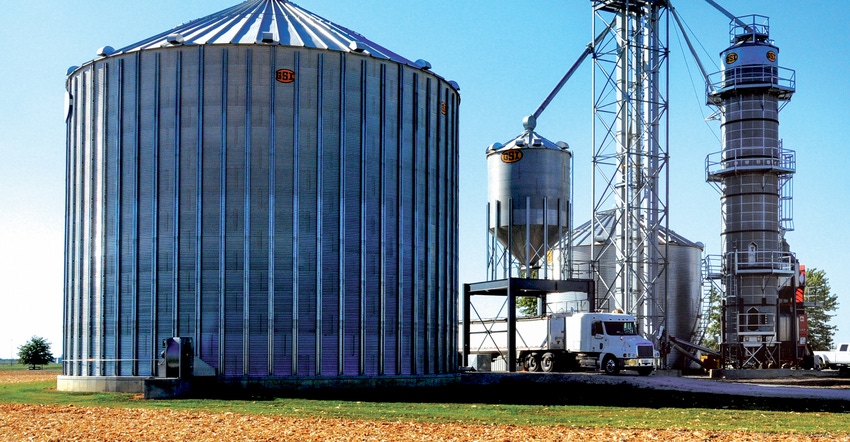October 6, 2020

A lot of grain will be coming off fields soon. So, it’s a good idea to check those bins to make sure they’re ready for storage.
It’s important that bins are well-maintained to deter pest and environmental elements such as moisture, which can cause spoiling and clumping, and can lead to other dangerous conditions like clogged unloading equipment, grain bridging and grain avalanches.
Harvesting and storing grain at the proper moisture content will lead to a better-quality grain and safer work conditions.
There are also many safety concerns when it comes to transporting grain.
Entrapments and engulfments
Grain entrapments and engulfments can occur in storage structures or transport vehicles because of unloading equipment or out-of-condition grain.
When unloading equipment is powered on or unloading chutes are opened, the grain begins flowing down the channel. If a person is present, it can pull them further into the grain. The flowing grain from above collapses in, surrounding and engulfing the individual. It only takes seconds for someone to become entrapped to a point that they can’t get out.
Similarly, grain bridging and avalanches can lead to an engulfment. A grain bridge is when grain sticks together forming a false surface of grain with a void space below. If a person attempts to enter the grain bin, he or she can break through that surface, fall into the void space and be covered by the surrounding grain in seconds.
Grain avalanches occur when grain becomes stuck to the bin walls after unloading. Quite often a person will attempt to remove the stuck grain from the bin floor and it will collapse on top of them. Before entering a grain bin or transport vehicle, consider referencing materials such as the Occupational Safety and Health Administration’s Standard 1910.272 for grain handling facilities and the Grain bin access design safety Document S624 from the American Society of Agricultural and Biological Engineers.
Here are some key safety points from those documents:
Ensure all warning labels are present and visible.
Use a lifeline and full-body harness system, and have an observer on the outside of the bin.
Follow lockout-tagout procedures for all power sources before entry.
Never enter a bin or transport vehicle while unloading equipment is active.
Never work below grain stuck to bin walls.
Do not work around grain alone.
Also, make sure your augers are being used properly. Multiple auger configurations or sizes can be used at times, whether it’s transporting from the harvester to a truck, transporting from a truck to the grain bin or moving grain between bins.
As useful and helpful as this equipment can be, it also presents major hazards if not used properly.
Entanglements
Entanglements can be life-threatening. Properly guarded augers and PTOs can be the difference between a close call and a fatality. Ensure that all shields and guards are securely fastened in place and in good condition.
Follow these safe practices when working around equipment:
Guards should be free of holes, dents or deformations that can decrease effectiveness.
Keeps hands, feet, hair and clothing away from moving parts.
Avoid wearing loose clothing and jewelry.
Lock out or tag out all equipment and power sources before performing service.
Shut down the equipment before doing any type of maintenance.
Ensure safe work area
Work areas should only be entered by authorized and trained personnel with proper personal protective equipment (PPE). During times of operation, it is helpful to have barriers and signage in place to deter others from entering without permission. Furthermore, these areas should be well-maintained to minimize the likelihood of an incident occurring.
Here are other ways to create a safe work zone:
Train workers on proper PPE.
Use barriers and signage to deter unauthorized visitors.
Have a secure area for children and do not allow them to play in or around grain.
Keep area clear of slip, trip and fall hazards.
Ensure equipment is working properly, and that all safety devices and guards are in place.
Train operators on emergency shutdown procedures.
Keep an emergency contact list in an easily accessed location.
Source: Penn State Cooperative Extension, which is solely responsible for the information provided and is wholly owned by the source. Informa Business Media and all its subsidiaries are not responsible for any of the content contained in this information asset.
Read more about:
Grain BinsYou May Also Like




